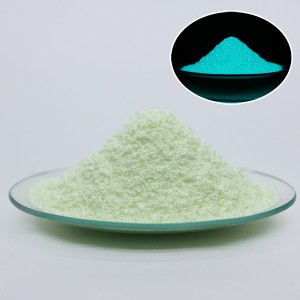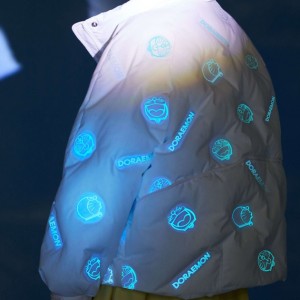Photoluminescent Pigment For Ink
Description
Glow in the dark ink is made by mixing photoluminescent powder and transparent ink. Glow ink made by MINHUI's glow in the dark powder has strong adhesion, high heat resistance and abrasion resistance. It can glow for 12+ hours and is suitable for surface printing or finishing of various paper, textile, wood, plastic, metal, pottery and other materials.
For spraying of ink, we recommend photoluminescent pigment with a grain size of E.
For silk screen printing/inkjet printing, we recommend size C or D. For gravure printing, we recommend size F.
Our photoluminescent pigment is non-radioactive, non-toxic,very weatherproof, very chemically stable with a long shelf life of 15 years.
Specification
|
Model |
Size
(D50)um |
AFTERGLOW INTENSITY(mcd/㎡) |
Glowing color | Appearance
(Daytime) |
||
|
10 min |
60 min |
Glow time | ||||
|
MHG-8C |
45~55 |
600 |
75 |
>12 hour |
|
|
|
MHG-8D |
25~35 |
480 |
60 |
|||
|
MHG-8E |
5~15 |
300 |
35 |
|||
|
MHG-6C |
45~55 |
550 |
80 |
|||
|
MHG-6D |
25~35 |
450 |
65 |
|||
|
MHG-6E |
5~15 |
280 |
37 |
|||
|
MHG-6F |
2~10 |
240 |
30 |
|||
|
MHG-4C |
45~55 |
500 |
70 |
|||
|
MHG-4D |
25~35 |
350 |
42 |
|||
|
MHG-4E |
5~15 |
220 |
29 |
|||
|
MHG-4F |
2~10 |
190 |
23 |
|||
|
MHG-2C |
55~75 |
350 |
40 |
|||
|
MHG-2D |
15~45 |
250 |
32 |
|||
|
MHG-1C |
55~75 |
260 |
35 |
10hour | ||
|
MHG-1D |
15~40 |
200 |
25 |
|||
|
Model |
Size
(D50)um |
AFTERGLOW INTENSITY(mcd/㎡) |
Glowing color | Appearance
(Daytime) |
||
|
10 min |
60 min |
Glow time | ||||
|
MHB-5C |
45~55 |
480 |
85 |
>12 hour |  Blue-green |
|
|
MHB-5D |
25~35 |
360 |
58 |
|||
|
MHB-5E |
5~15 |
260 |
38 |
|||
|
MHB-4C |
45~55 |
440 |
75 |
|||
|
MHB-4D |
15~35 |
320 |
50 |
|||
|
MHB-4E |
5~15 |
220 |
30 |
|||
|
MHB-3C |
55~75 |
400 |
55 |
|||
|
MHB-3D |
15~45 |
280 |
35 |
|||
|
MHB-1C |
55~75 |
260 |
38 |
10hour | ||
|
MHB-1D |
15~40 |
200 |
23 |
|||
Note:1. Luminance test conditions: D65 standard light source at 1000LX luminous flux density for 10min of excitation.
2. If the ink is water-based or the final product may be exposed to humid environment for a long time, we recommend choosing our waterproof photoluminescent pigment: MH-**W series.
Certification
MH serie's photoluminescent pigment meets the US requirement of ASTM F963-16 (Standard Consumer Safety Specification on Toy Safety), Test Method CPSC-CH-E1003-09.1 for total Lead, and ASTM F 963-16 (Clause 8.3) for soluable heavy metal; and registered for EU REACH standard in accordance with the REACH regulation (EC) No 1907/2006.
MHG Series Photoluminescent Pigment For Resin Specification
|
Model |
Size (D50)um |
Afterglow Intensity (mcd/㎡) |
Glowing color (Night) | Appearance (Daytime) | ||
|
10 min |
60 min |
Glow time | ||||
|
MHG-6B |
65~85 |
725 |
120 |
>12 hour |
|
|
|
MHG-6C |
45~55 |
480 |
85 |
|||
|
MHG-6D |
25~35 |
380 |
55 |
|||
|
MHG-6E |
5~15 |
280 |
39 |
|||
|
MHG-6F |
2~10 |
240 |
30 |
|||
|
MHG-4B |
65~85 |
640 |
105 |
|||
|
MHG-4C |
45~55 |
450 |
70 |
|||
|
MHG-4D |
25~35 |
320 |
42 |
|||
|
MHG-4E |
5~15 |
220 |
29 |
|||
|
MHG-4F |
2~10 |
190 |
23 |
|||
|
MHG-2C |
55~75 |
350 |
40 |
|||
|
MHG-2D |
15~45 |
250 |
32 |
|||
|
MHG-1C |
55~75 |
260 |
35 |
10hour | ||
|
MHG-1D |
15~40 |
200 |
25 |
|||
MHB Series Photoluminescent Pigment For Resin Specification
|
Model |
Size (D50)um |
Afterglow Intensity(mcd/㎡) |
Glowing color (Night) | Appearance (Daytime) |
||
|
10 min |
60 min |
Glow time | ||||
|
MHB-5B |
65~85 |
700 |
120 |
>12 hour |
|
|
|
MHB-5C |
45~55 |
480 |
85 |
|||
|
MHB-5D |
25~35 |
360 |
58 |
|||
|
MHB-5E |
5~15 |
260 |
38 |
|||
|
MHB-4B |
65~85 |
630 |
110 |
|||
|
MHB-4C |
45~55 |
440 |
75 |
|||
|
MHB-4D |
15~35 |
320 |
50 |
|||
|
MHB-3C |
55~75 |
400 |
55 |
|||
|
MHB-3D |
15~45 |
280 |
35 |
|||
|
MHB-1C |
55~75 |
260 |
38 |
10hour | ||
|
MHB-1D |
15~40 |
200 |
23
|
|||
Note:
1.Luminance test conditions: D65 standard light source at 1000LX luminous flux density for 10min of excitation.
2. Particle size B is recommended for production craft of pouring, reverse mould, etc. Particle size C and D are recommended for printing, coating, injection, etc. Particle size E and F are recommended for printing, wiredrawing, etc.
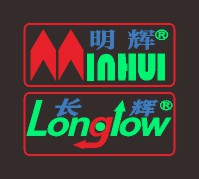
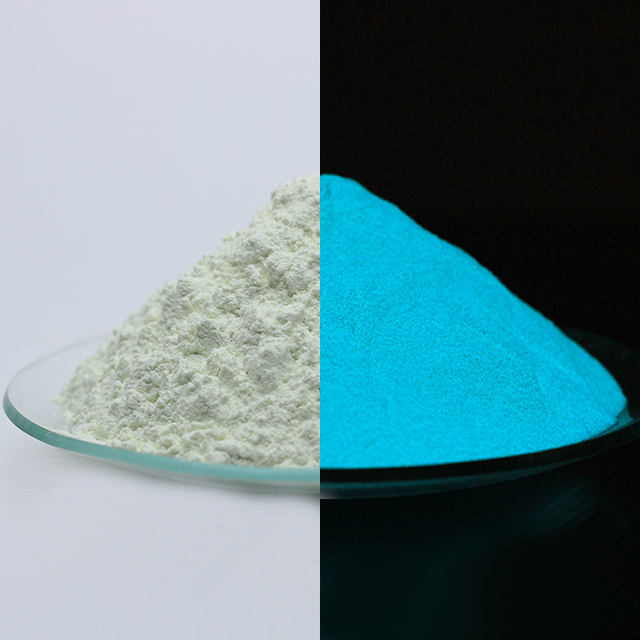
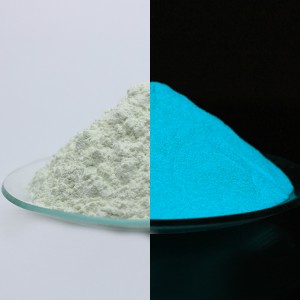
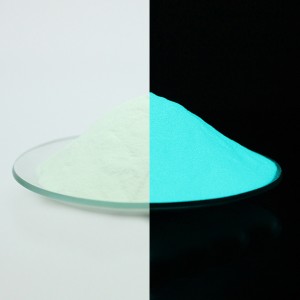
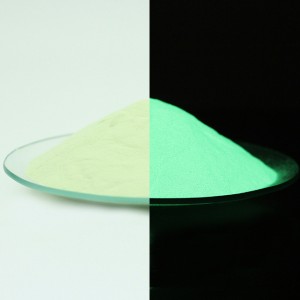
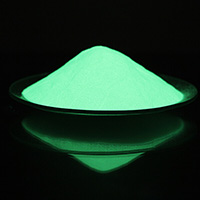 Yellow-green
Yellow-green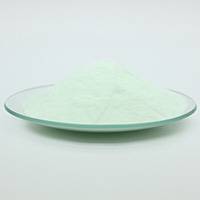 Light-yellow
Light-yellow
